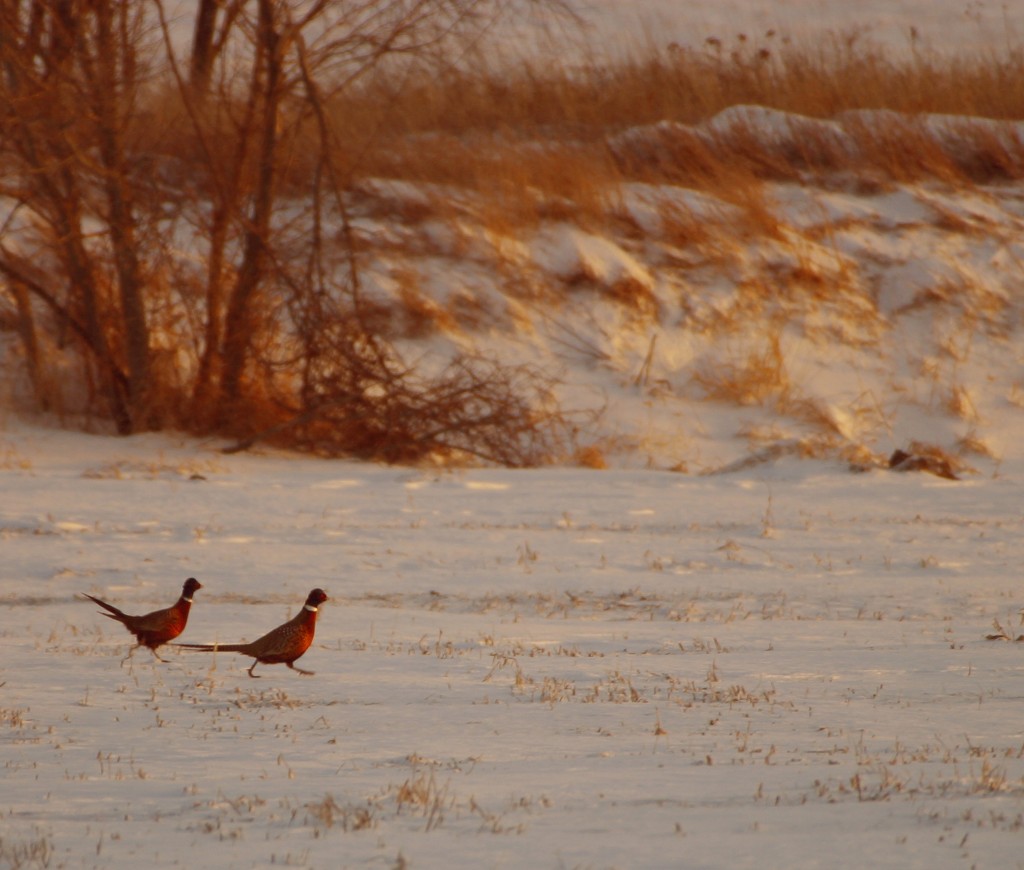The End of Pheasant Season … and a Fest!
By Taylor on January 9, 2015 in Blog

Pheasants run for shelter as the sun sets. (Photo by Bob Lancaster)
You may know that pheasant season ends in Iowa this weekend, but did you know that the ring-necked pheasant (Phasianus colchicus) has only been in Iowa since 1900?
The birds are actually native to China, but were first successfully introduced to the United States in Oregon in 1881. Informal and formal stockings of pheasant happened in the early twentieth century in Iowa, and the first statewide hunting season opened in 1925.
These long-tailed game birds prefer to live in grasslands, wetlands and other bushy areas that are interspersed with agriculture, though they vastly prefer grasslands. According to the Iowa Department of Natural Resources, “pheasants are six times more likely to nest in undisturbed grassland than woody areas such as tree rows.” And because they tend to nest in dense, tall vegetation, grass that is 10-12 inches high works well to cover their nesting sites. Obviously, habitat is key:
Iowa's landscape has changed drastically from what those first pheasants saw more than 100 years ago. As more farmland came out of grass and hay and went into rowcrop, pheasants lost habitat. In the 1950s, Iowa had more than 10 million acres of potential pheasant habitat. In 2013, only 2.78 million acres exist – the lowest ever recorded. Without proper habitat – especially during the winter and in the spring nesting season – it's difficult for pheasants to survive.
INHF’s work in grasslands and wetlands restoration helps maintain habitats for pheasants and ensures them a good home in Iowa. For example, in 2011, with the help of funding from Pheasants Forever, INHF acquired property in Wright County adjacent to Big Wall Lake Wildlife Management Area. The cropland was restored to grassland and wetland habitat under the Wetlands Reserve Program, and has since been transferred to the DNR and is available for public recreation. The project increased the contiguous connection of conservation land by 100 acres in the area.
To learn more about habitat management and restoration, visit INHF’s table at the National Pheasant Fest & Quail Classic, held Feb. 20-22 at the Iowa Events Center in Des Moines. This annual trade show is all about wildlife conservation with seminars on habitat restoration, hunting, wild game cooking and more.
